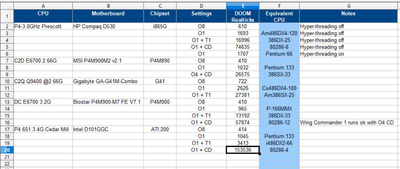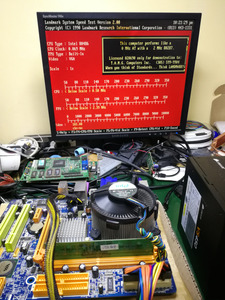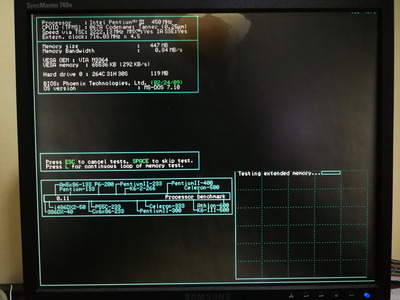Reply 80 of 251, by zyzzle
kalohimal wrote on 2020-07-08, 14:45:Next revision... perhaps to include AMD K10 multiplier support per Falcosoft's suggestion? I hesitate to include CPUs beyond K8/Core2, as their chipsets no longer support Windows 98, hence they are not ideal for retro gaming, although they could still be used for DOS gaming if slowed down enough.
Oh... please do include the latest Intel Core familes, if possible! There are those of us who use the latest systems, and still want to play old DOS games, at retro speeds. It pains me to see that you think the response to your BOMBSHELL program has been "negligible". Those are sad words.
CPUSPD works perfectly on my Intel Atom and C2D system. I can adjust multiplier AND voltage, which is wonderful indeed!
I've tested v 1.4 of CPUSPD on my i5 5200 and disabling L1 cache works, and fidvid setting kind of works, I only can change from f1500 to f1900 with stable result. All other values are impossible. It appears multiplier is locked on my CPU at either 21x or 25x.
Attempting throtting on my core i5 gives immediate sigfault. Disabling L1 cache works, but then give sigfault without reporting status. The speed of the system is reduced to a 386 level with L1 cache disabled. It is impossible to disable L2 cache on the core i5, it would seem, as option -c2d slows the system down to the level of option -cd.
Will it be impossible to add throttling to Intel Core family cpus? If I may help in any way by sending you reports of my southbridge chipset, or any other debug info, please ask. By the way, the old utility FDAPM from way back in 2009 actually does support thottling, at least in my CPU / motherboard. It gives 8 options of throttling available. Using setting /SPEED 1 seems to be identical to 87.5% ODPM throttle setting. Paradoxically it seems to allow throttling in Intel core family, at least on my Lenovo core i5 laptop!
I thank you for creating this CPUSPD!


